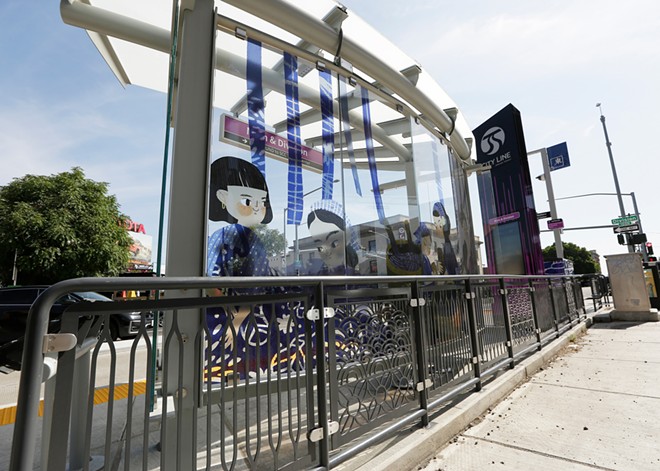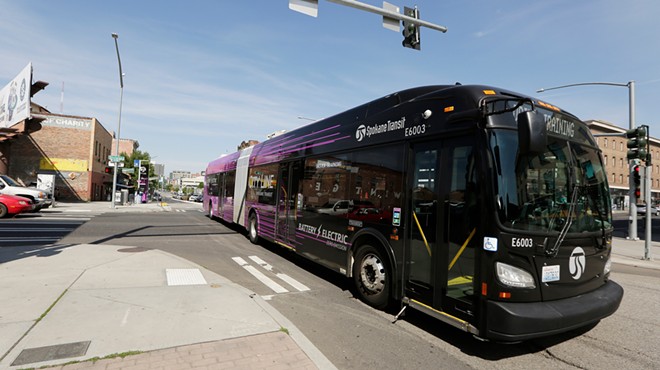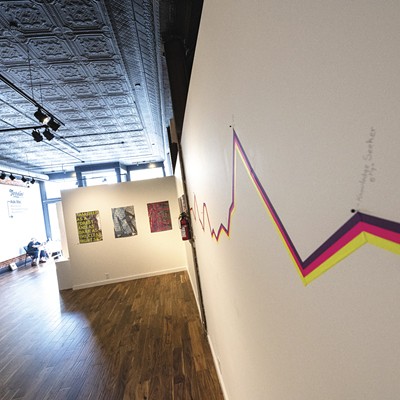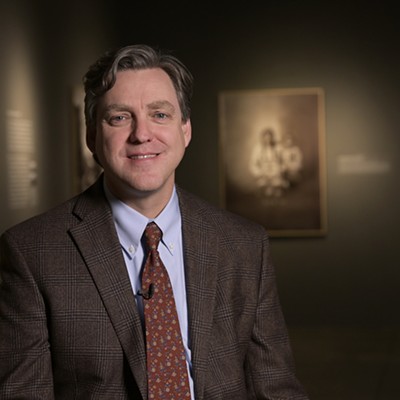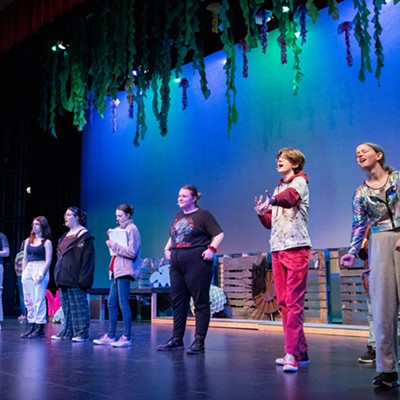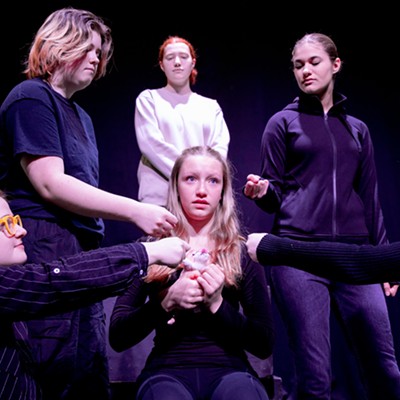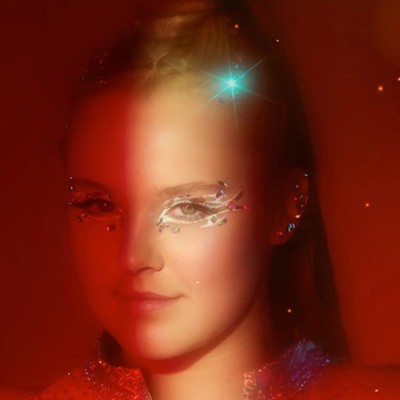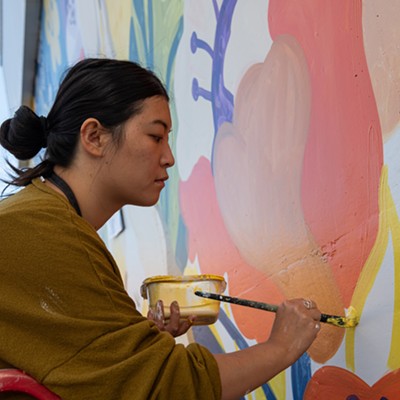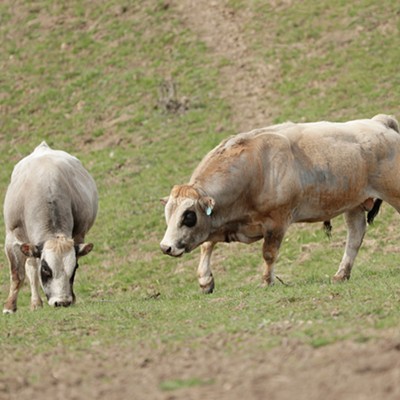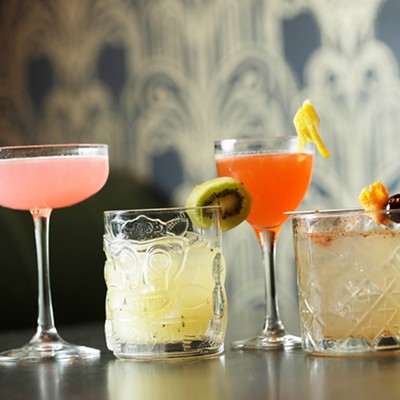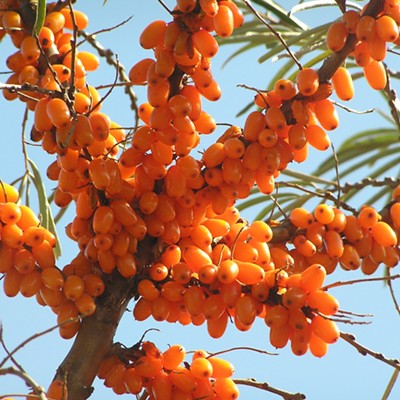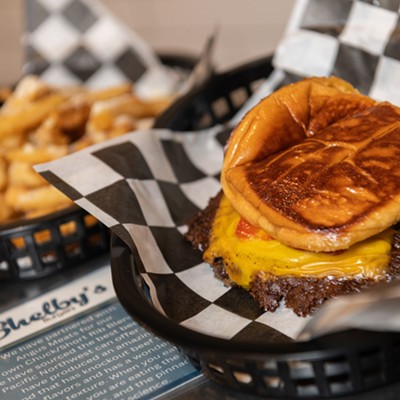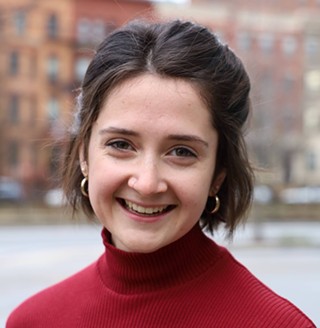From the Firenze Santa Maria Novella rail station in Florence, Italy, to the University of Florence's School of Engineering, a tram passes two public gardens, three piazzas, a palace, a fountain and two historic landmarks, all in just over a mile. Beauty transforms even a mundane commute into a mini city tour, to say nothing of the attractions that people travel from all over the world to see, like the Ponte Vecchio, the Duomo and Michelangelo's David.
When Juliet Sinisterra studied abroad in Florence decades ago, she began to understand how beauty could transform a place.
"The art was integrated into the urban fabric," she says. "You're just constantly arriving at either beautiful architecture or sculptures or a museum — it's just part of that movement through the city."
Sinisterra, who worked as an architect and urban designer, is now CEO of Spokane's University District. The semester in Florence helped her decide to consult for Spokane Arts and the Spokane Transit Authority in 2021 as they designed public art installations along the STA's new City Line.
The City Line is a 6-mile bus rapid transit route connecting Browne's Addition to Spokane Community College. Something of a cross between light rail and bus, the City Line is the first bus rapid transit route in the Inland Northwest.
Melissa Huggins, Spokane Arts' soon-departing executive director, advocated to make the new line even more unique. She created a project to beautify every stop along the new rapid bus route. Bus stops were grouped by neighborhood, and community leaders collaborated closely with nine local artists to produce designs celebrating each neighborhood's identity.
The attractive stops add to the City Line's charm, making the ride more appealing to locals and tourists alike. Even without palaces and piazzas, a morning bus commute can become a moment to appreciate the beauty of home.
Hip-hop. Anime. Basketball. Joshua Thomas' designs are colorful and cartoonish, a pop of color and blast of hope on paper, T-shirts or buildings. Thomas is the founder and designer of Lejit Designs, an illustration, branding and UX company out of Liberty Lake, though his work is cropping up everywhere: Eastern Washington University, Priest Lake, and downtown Spokane.
Thomas' first public art installment was a red-and-yellow mural on First Avenue that brightened up the boarded windows of the Carr Sales lighting store, which closed in 2018. In 2021, Thomas filled the empty, somber downtown Spokane space with an action-packed celebration of gaming, childhood and fun.
"A lot of the work you get to do for public art, you can feel a level of importance and a level of community that sometimes is lacking in traditional design work," Thomas says.
Also in 2021, Spokane Arts put out a call for applications on the City Line art project. Huggins had spent the past year and a half gauging neighborhood enthusiasm for public art and the City Line itself.
Eventually, community leaders got so excited that they wrote thick briefs to introduce their neighborhood's history, geography and demographics. As part of the application process, neighborhoods requested initial sketches showing how an artist would weave the information into one cohesive, appealing design.
"The neighborhoods were super active," Huggins says. "Not only in creating the framework for these descriptions that the artists were drawing from, but then they also got to interview the artists and pick their favorite artists. Then once the artist was selected, they also gave rounds of input before the design was finalized."
Applicants could choose which neighborhoods to apply to. Thomas' first choice was the group of stations STA dubbed the "symphony district," which includes stops near the Fox Theater, the Knitting Factory and the former Carr lighting building.
"I have loved music for as long as I can remember," Thomas says. "I just felt a very strong kinship with the description they gave of the symphony station and the history and all of the people that had been through there. I had done a mural already in that area — I love that area, right?"
The symphony district leaders loved Thomas, too. He set to work distilling his affection into visible, serviceable design.
Art is featured on the same four elements at every bus station — a glass shelter panel, a tall metal flag, waste bins and a railing panel. STA chose these elements to comply with federal guidelines for transportation funding. It was a learning process, Huggins says, since it's the first time public art has been integrated with public transportation in Spokane.
Sinisterra reviewed each individual artist's work, but also needed to ensure some kind of cohesion between all nine neighborhood designs. For instance, each artist was required to use a certain percentage of the STA line's signature purple to match the buses pulling up to the stop.
Thomas decided to take it a step further, ditching his original idea and adopting the entire STA palette in order to get the highest saturation of colors into his design.
"Honestly, some of your best ideas always come from technical limitations," Thomas says. "Any time one door closes, another one opens. In my experience, the door that opens tends to be something that's far more interesting than the one if everything had just gone exactly as planned."
For the symphony district stops, Thomas depicts instrumentalists, singers, comedians and dancers in bold, blocky cartoons. In the Chief Garry neighborhood, Danielle Davis incorporates kindergarten drawings of dinosaurs and other six-year-old musings from the local elementary school, a public time capsule complete with names and ages of the young artists. Jiemei Lin depicts the history of downtown's international east end with scenes of indigo dyeing and a long-forgotten instrument parade on the glass.
"For residents, for commuters, and also for visitors, you're going to learn something about Spokane — its history and its culture and its characteristics — as you move through those stations," Huggins says. "This is transformative for Spokane."
Public art "activates public spaces," she says. An abandoned place can feel unsafe. But color and community investment change that.
"Being able to see some of the playful, beautiful art as you're commuting to school or commuting to a job — ideally it brightens people's faces," Sinisterra says. "It provides a lightness that sometimes we lose in the urban environment."
Getting people to enjoy riding public transit is a huge task in most American cities. But Huggins believes that "being delighted" is possible at a bus stop, if it's beautiful and educational and surprising.
Spokane isn't Florence. But that doesn't mean it can't learn something from the Italian city, and other cities all over the world famous for charming spaces and easy, enjoyable transit.
"We hear so much fear about urbanism in the downtown," Sinisterra says. "[Art] has a role to tell stories and to create the energy that helps people feel lighter and more connected and part of a place. We have to feel a part of our place or else we're not gonna protect it. It is a really lovely way to pull [people] out of their day-to-day and just see something that's lovely and playful and fun and celebrates their city." ♦
This article has been changed to update the source of funding for public art along the City Line.
CITY LINE OPENING DAY CELEBRATION
Sat, July 15 from 11 am-2 pm, free & all ages
Ride the City Line all afternoon for free and enjoy free food, live music, games and more at five parties happening along the new route, in Browne's Addition, Downtown, the University District, Mission Park and Chief Garry Park. More info at spokanetransit.com/cityline

